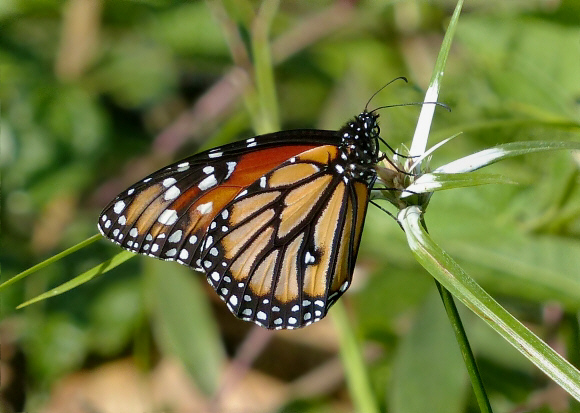 Danaus eresimus montezuma Tatama NP, Colombia – Peter Bygate
Danaus eresimus montezuma Tatama NP, Colombia – Peter Bygate
Introduction
The genus Danaus comprises of 12 species, distributed variously across southern Europe, Africa, Asia, Oceania, Australia and the Americas. The most widely distributed and well known species is the Monarch Danaus plexippus – the most famous migrant in the butterfly world. Its powers of migration are so great that it has been able to spread to across the Americas from Canada to Peru; across the Atlantic to Europe, Africa and India; and across the Pacific to Australia, New Zealand and Papua New Guinea.
Danaus eresimus is distributed from Texas and Florida to Peru and Brazil. There are 9 subspecies.
Habitats
This species is mainly associated with disturbed areas of mid-elevation forest.
Lifecycle
To be completed.
Adult behaviour
The butterflies have a powerful but fluttering flight, interspersed with periods of soaring and gliding in wide circles as they fly from one clump of flowers to another. They settle frequently to nectar at Asclepias, Eupatorium, Senecio and other flowers.
The bodies of all Danaines contain cardenolides derived from the larval foodplants. Any bird eating one is likely to be affected by vomiting, muscular spasms and visual disturbance. Birds are able to learn and remember the patterns and colours of toxic butterflies, so after suffering the unpleasant experience of eating one Monarch they are less likely to attack another. Consequently many other species ( Mullerian mimics ) have evolved similar patterns and colouration which help them evade predation. These mimics include a high number of ‘tiger complex’ orange and black Ithomiines as well as other Danaines. Additionally numerous palatable species ( Batesian mimics ) have evolved similar colours and markings which fool birds into believing that they are inedible.
